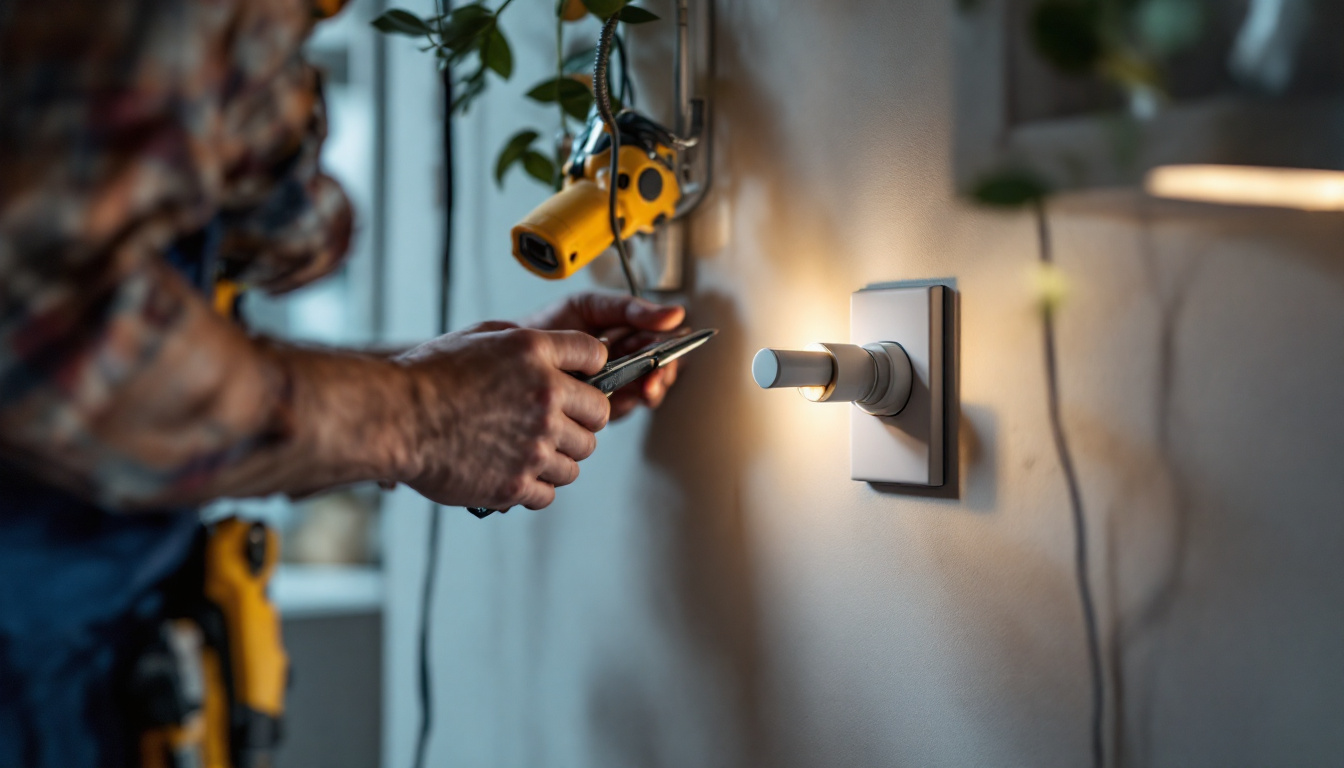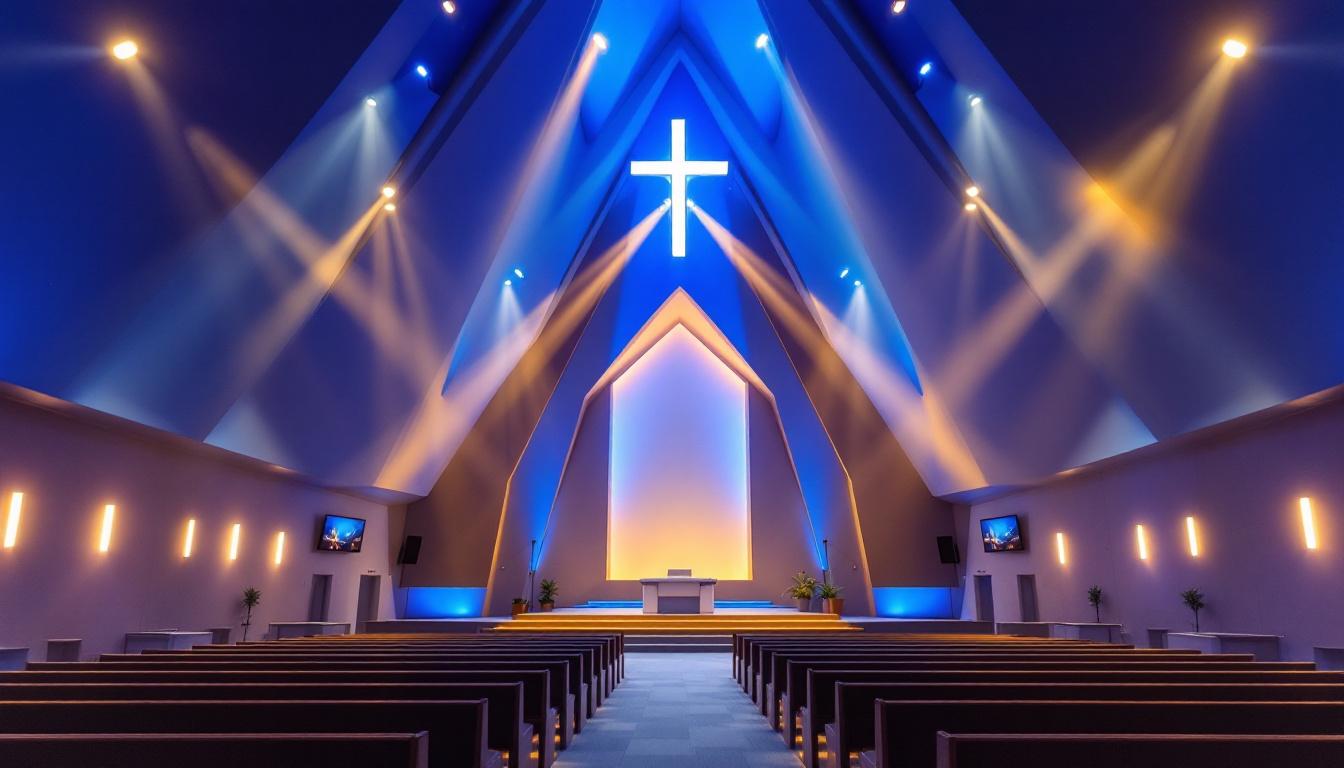
In the ever-evolving world of lighting, recessed can LED fixtures have emerged as a popular choice among both homeowners and contractors. Their sleek design, energy efficiency, and versatility make them ideal for a variety of applications. For lighting contractors, understanding the nuances of recessed can LED installations is essential for delivering quality work and satisfying clients. This article provides key tips to enhance your expertise and ensure successful projects.
Recessed can LEDs are lighting fixtures that are installed into the ceiling, creating a clean and unobtrusive look. Unlike traditional incandescent or fluorescent lights, LED technology offers numerous advantages, including longer lifespans and reduced energy consumption. This section delves into the fundamental aspects of recessed can LEDs that every lighting contractor should know.
A recessed can LED fixture typically consists of several key components: the housing, trim, and LED module. The housing is the metal shell that holds the fixture in place, while the trim refers to the visible part that can be customized in various styles and finishes. The LED module is the heart of the fixture, providing illumination.
Understanding these components is crucial for contractors, as it allows for better selection and installation. For instance, the choice of trim can significantly impact the aesthetic of a space, while the housing must be compatible with the ceiling type to ensure proper installation. Additionally, many modern recessed can LEDs come with adjustable features, allowing for directional lighting that can enhance the ambiance of a room. This flexibility is particularly useful in spaces like living rooms or galleries where highlighting specific areas or artwork is desired.
One of the standout features of recessed can LEDs is their energy efficiency. Compared to traditional lighting options, LED fixtures consume significantly less power, translating to lower utility bills for homeowners. Additionally, LEDs have a much longer lifespan, often lasting up to 25,000 hours or more. This longevity not only reduces replacement costs but also minimizes waste, making LEDs an environmentally friendly choice.
Lighting contractors should emphasize these benefits to clients, as they are often key selling points. Providing information on energy savings and longevity can help clients make informed decisions and feel more confident in their investment. Furthermore, the reduced heat output of LED fixtures means that they are safer to use in various settings, decreasing the risk of overheating and fire hazards associated with traditional bulbs. This aspect is particularly important in residential applications where families are concerned about safety. By highlighting these advantages, contractors can position recessed can LEDs as a superior choice for modern lighting solutions.
Successful installation of recessed can LEDs requires careful planning and execution. This section outlines best practices that lighting contractors should follow to ensure a seamless installation process.
Before any installation begins, it’s essential to plan the layout of the recessed can lights. Consider the purpose of the space and the desired lighting effect. For example, in a living room, the lights may need to be spaced further apart to create a soft, ambient glow, while in a kitchen, closer spacing might be necessary for task lighting.
Utilizing a lighting design software can assist in visualizing the layout and ensuring optimal placement. Additionally, contractors should take into account the ceiling height and any obstructions such as beams or ductwork that may affect the installation. It’s also beneficial to consider the room’s color scheme, as lighter colors can reflect light more effectively, enhancing the overall brightness and ambiance. Furthermore, incorporating dimmers into the design can provide flexibility, allowing users to adjust the light intensity based on their needs and preferences.
Not all recessed can LED fixtures are created equal. Contractors should select fixtures that are appropriate for the intended application. Factors to consider include the brightness (measured in lumens), color temperature (measured in Kelvin), and beam angle.
For instance, a warm white light (around 2700K) is often preferred for residential spaces, while cooler temperatures (around 4000K) may be more suitable for commercial environments. Understanding these specifications can help contractors recommend the best options to their clients. Additionally, it’s wise to consider energy efficiency ratings, as many LED fixtures now come with ENERGY STAR certification, which can provide long-term savings on energy bills. Contractors should also be aware of the different styles and finishes available, as these can complement the overall aesthetic of the space, from sleek modern designs to more traditional looks.
Electrical safety is paramount when installing recessed can LEDs. Contractors must ensure that all wiring is up to code and that the fixtures are properly grounded. Using junction boxes and ensuring secure connections can prevent electrical hazards and ensure the longevity of the installation.
Additionally, it’s crucial to consider the load on the circuit. Overloading can lead to tripped breakers or even electrical fires. Contractors should calculate the total wattage of all fixtures on a circuit and ensure it does not exceed the circuit’s capacity. It is also advisable to use wire gauges that are appropriate for the amperage of the circuit, as this can significantly reduce the risk of overheating. Furthermore, implementing a thorough testing phase after installation can help identify any potential issues before the system is put into regular use, ensuring that everything operates smoothly and safely for the end user.
Lighting design plays a significant role in the overall aesthetic and functionality of a space. This section explores design considerations that lighting contractors should keep in mind when working with recessed can LEDs.
Effective lighting design often involves creating layers of light to enhance the ambiance of a room. Recessed can LEDs can serve as a primary source of ambient light, but they can also be used in conjunction with other lighting types, such as wall sconces or pendant lights, to create a more dynamic environment.
Contractors should encourage clients to consider how different light sources can work together to achieve the desired effect. For example, using recessed lighting for general illumination while incorporating accent lighting can highlight artwork or architectural features.
The height of the ceiling significantly impacts the effectiveness of recessed can lighting. In spaces with higher ceilings, contractors may need to choose fixtures with a wider beam angle to ensure adequate light distribution. Conversely, in lower ceilings, tighter beam angles can create focused pools of light without overwhelming the space.
Contractors should also consider the placement of the fixtures in relation to the furniture and other elements in the room. Proper placement can prevent shadows and ensure that the light is directed where it is needed most.
Even experienced lighting contractors may encounter challenges during the installation of recessed can LEDs. This section highlights common issues and offers solutions to ensure a smooth process.
One of the most common challenges when installing recessed can lights is managing insulation. In many cases, insulation can obstruct the housing or create fire hazards if it comes into contact with the fixture. To address this, contractors should use IC-rated (Insulation Contact) housings that are designed to be in contact with insulation without posing a fire risk.
Additionally, contractors should educate clients about the importance of maintaining proper insulation levels in the ceiling. This not only enhances energy efficiency but also contributes to the overall comfort of the space.
Glare can be a significant issue with recessed can lighting, particularly in spaces where the fixtures are directly visible. To minimize glare, contractors should consider using adjustable trims that allow for directionality. This feature enables the light to be aimed away from the line of sight, reducing discomfort for occupants.
Furthermore, selecting fixtures with lower brightness levels or using dimmers can help control glare and create a more pleasant lighting experience.
Once the installation is complete, maintenance and potential upgrades are crucial for ensuring the longevity and performance of recessed can LEDs. This section discusses maintenance tips and the importance of staying updated with the latest technology.
While LEDs are known for their durability, regular maintenance checks can help identify potential issues before they become significant problems. Contractors should recommend periodic inspections to clients, focusing on checking for any flickering lights, discoloration, or signs of wear.
Additionally, cleaning the fixtures and trims can help maintain optimal light output. Dust and debris can accumulate over time, diminishing the effectiveness of the lighting. Simple maintenance can go a long way in preserving the quality of the installation.
The lighting industry is continuously evolving, with new technologies and products emerging regularly. Contractors should stay informed about advancements in LED technology, such as smart lighting solutions and tunable white LEDs, which offer enhanced control and customization options.
By staying current with technology trends, contractors can provide clients with the most innovative solutions, ensuring that their installations remain competitive and appealing.
Recessed can LED fixtures present a myriad of opportunities for lighting contractors to enhance their projects and satisfy clients. By understanding the components, installation best practices, design considerations, and maintenance strategies, contractors can deliver high-quality work that meets the evolving demands of the market.
As the industry continues to grow, embracing these key tips will not only improve the quality of installations but also position contractors as knowledgeable professionals in the field. With a focus on energy efficiency, design, and technology, recessed can LEDs will undoubtedly remain a staple in modern lighting design.
Ready to elevate your lighting projects with the highest quality recessed can LEDs? Look no further than LumenWholesale, where we provide contractors with spec-grade lighting products at unbeatable wholesale prices. Say goodbye to local distributor markups and hello to our extensive selection that meets rigorous industry standards. With LumenWholesale, you’ll enjoy the convenience of bulk buying with free shipping, ensuring you get the best value without any hidden costs. Don’t compromise on quality or price. Wholesale Lighting at the Best Value is just a click away. Upgrade your lighting solutions with LumenWholesale today.

Discover how 4 LED light innovations are revolutionizing the efficiency and performance of lighting contractors.

Discover how LED light switches are transforming the lighting industry with real-world success stories from contractors.

Discover why staying updated on receptacle electrical standards is crucial for lighting contractors.

Discover how modern church lighting fixtures can enhance ambiance and safety.